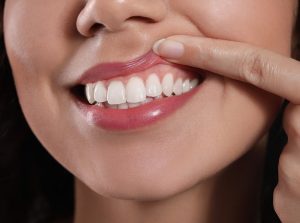Maintaining good oral health is crucial for overall well-being. But sometimes dental diseases can go unnoticed until they cause significant discomfort or damage. If you’re concerned about your dental health and want to identify potential issues early on, you can follow five essential steps.
By paying attention to your symptoms, practising good oral hygiene, scheduling regular dental check-ups at your dental clinic on the Sunshine Coast, watching out for warning signs, and seeking professional advice when needed, you can effectively navigate the path towards a healthier smile.
In this blog, we will discuss these steps to help you determine if you are suffering from dental diseases. It will empower you to take proactive measures for your dental well-being.
What Causes Dental Disease?
Dental disease is also known as dental caries or tooth decay. It is primarily caused by a combination of bacteria, a susceptible tooth surface, and a diet high in fermentable carbohydrates. The factors that can result in the development of dental disease include the following:
- Bacteria: The mouth naturally contains various types of bacteria, including Streptococcus mutants and Lactobacillus. These bacteria form a sticky film called plaque on the teeth. When you take foods and beverages, particularly those rich in sugars and starches, the bacteria in plaque use these carbohydrates as a fuel source and produce acids as byproducts.

- Plaque formation: If plaque is not adequately removed through proper oral hygiene practices such as regular brushing and flossing, it can accumulate and adhere to the tooth surfaces. Over time, plaque hardens and forms a substance called tartar or dental calculus. Tartar provides a rough surface for further plaque accumulation, making removing it more challenging.
- Acid production: When bacteria in plaque break down carbohydrates, they produce acids that can demineralise and weaken the tooth’s hard outer layer, called enamel. This acid attack can lead to the formation of cavities or dental caries.
- Susceptible tooth surface: Certain factors can increase the susceptibility of tooth surfaces to dental disease. These include deep grooves or pits on the tooth’s chewing surfaces, enamel defects, tooth enamel that is naturally thin, or exposed tooth root surfaces due to gum recession. These vulnerable areas are more prone to decay.
- Diet: A diet high in sugary and starchy foods and drinks promotes the growth of harmful bacteria in the mouth. Frequent consumption of sugary snacks, sodas, and candies can cause dental disease. Additionally, when sipped slowly over time, sugary or acidic beverages can prolong the acid attack on the teeth.
- Poor oral hygiene: Inadequate oral hygiene practices, such as irregular brushing and flossing, can cause the accumulation of plaque and tartar. It increases the risk of dental disease.
- Dry mouth: Saliva is vital for maintaining oral health by washing away food particles, buffering acids, and providing minerals to remineralise the teeth. Reduced saliva flow, often caused by certain medications, medical conditions, or mouth breathing, can increase the risk of dental disease.
It’s important to note that genetics, age, overall health status, and certain medications can also influence your susceptibility to dental disease. Regular dental check-ups, proper oral hygiene practices, a balanced diet, and reducing sugary food can help prevent dental disease.
5 Steps to Figure Out Whether You Are Suffering from Dental Disease
To determine whether you are suffering from dental diseases, you can follow these five steps:
- Self-Examination: Conduct a visual inspection of your teeth and gums using a mirror. Look for signs of tooth decay. It may include signs like dark spots or holes (cavities), discolouration, or rough edges on the teeth. You can check for swelling, redness, or bleeding in your gums. It could indicate gum disease. Pay attention to persistent bad breath or an unpleasant taste in your mouth, as these can also be signs of dental issues.
- Evaluate Symptoms: Take note of any symptoms you are experiencing. Common signs of dental diseases include tooth sensitivity (discomfort when consuming hot, cold, or sweet foods and beverages), toothache, gum sensitivity or pain, swollen or bleeding gums, persistent bad breath, and loose teeth. Jaw pain, difficulty chewing, or clicking sounds when opening or closing your mouth may indicate temporomandibular joint (TMJ) disorder, which affects the jaw joint.
- Dental History: Consider your dental history, including past diagnoses and treatments. Have you had any previous cavities, fillings, or root canal treatments? Have you been diagnosed with gum disease or other dental conditions? Your dental history can help you to understand your current oral health status. It will also help you to know the potential risk factors for dental diseases.
- Lifestyle and Habits: Evaluate your lifestyle and habits that may impact your oral health. Do you follow a proper oral hygiene routine, including brushing your teeth twice a day and flossing daily? Are you consuming a balanced diet and limiting your intake of sugary and acidic foods or drinks? Do you smoke or use tobacco products? These factors can contribute to dental diseases and should be considered when assessing oral health.
- Dental Check-up: Schedule an appointment with a dentist for a comprehensive dental examination. A dental professional will thoroughly check your teeth, gums, and oral tissues. Your dentist may use diagnostic tools such as X-rays if necessary. They will evaluate your oral health, identify existing dental diseases or potential issues, and recommend appropriate treatments or preventive measures. Regular dental check-ups are essential for maintaining good oral health and detecting dental diseases at an early stage.
Self-assessment and home care are important to ensure your oral health. However, consulting with your dental professional is essential for an accurate diagnosis and appropriate treatment of dental diseases.
Final Thoughts
In conclusion, following these five steps can help assess whether you are suffering from dental diseases. Self-examination helps you to visually inspect your teeth and gums for any signs of decay or gum disease. Evaluating symptoms, considering your dental history, and examining your lifestyle and habits provide further insights into your oral health status and potential risk factors.
However, it’s important to remember that self-assessment should be complemented by regular dental check-ups with a professional in the dental clinic Sunshine Coast. Dentists possess the expertise and tools to diagnose dental diseases accurately and provide appropriate treatment. By taking proactive steps, maintaining good oral hygiene practices, and seeking professional care, you can ensure optimal oral health and prevent the progression of dental diseases.





